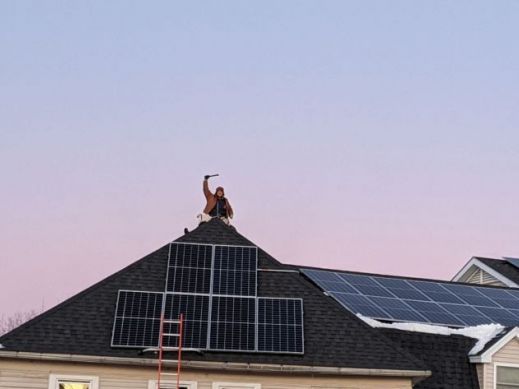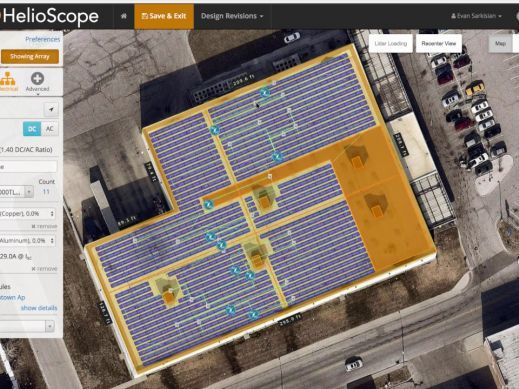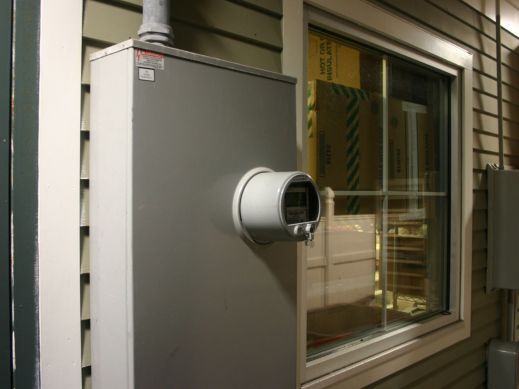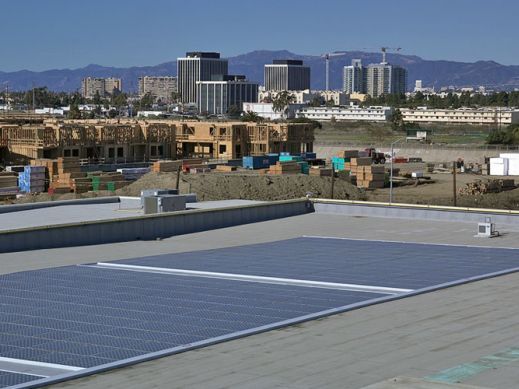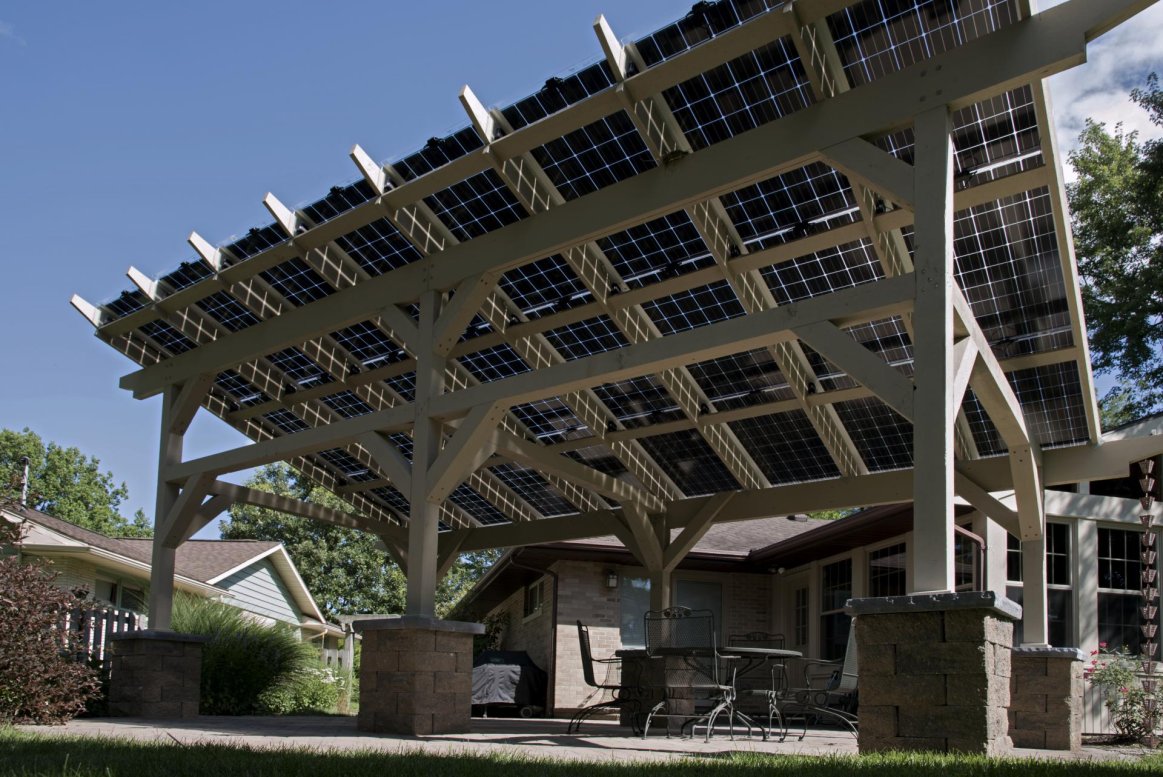
What are Solar Canopies
Solar canopies are systems that use either wood, metal, or another material to hold up solar panels on a non-roof structure. The most well-known version of a solar canopy is probably a solar carport. The system can also be used residentially on pergolas, or other constructed systems.
Why have homeowners started showing interest in solar canopies?
By using a solar canopy a contractor can make the most out of the space they have to work with. In urban areas, like the District of Columbia, homeowners that want to go solar are faced with the limitations of the area their home provides. Many cities also provide solar incentives, DC for example has a very strong SREC (Solar Renewable Energy Credit) market. If an appropriately sized system can fit on the property then homeowners can take advantage of city incentives. With a canopy, contractors can use the space from a pergola and a small amount of additional rooftop space to build out a full-sized system. Depending on the size of the canopy, you can use it as either the full project or an add-on for customers that also want solar on their roof.
Additionally, some homeowners opt for an aesthetically minded install. They might have an electric vehicle (EV) that they want a canopy to cover while also providing the power to charge their EV and the canopy allows them to have a beautiful fully integrated solar home. Other homeowners, without an EV, think that the PV systems alone look amazing and that this solution can both fit the overall appearance of their desired install while providing them a financial benefit or independence from the grid. With hip roofs and poor roofs for solar, where the panels are going to be incredibly spaced out, canopies are a creative way to add some additional space for solar while adding a nice feature to a home.
Are there any additional skills required for an installer to complete one?
Some extra skills are required to complete a solar canopy. Most of all carpentry experience. When talking to a contractor that regularly takes on these types of solar projects, all of their installers had carpentry experience before becoming solar installers. They believe it would not be possible to complete with just solar installation experience. The structural building skills that you gain with carpentry are paramount when building a solar canopy. If you add some carpentry experience to your crew it allows for more creative and customized solutions as well as not being constrained to a kit’s directions. A more unique background can be very helpful and allow you to stand out when building a solar canopy project.
With kits, you receive all of the materials that you will need to install the solar canopy in one bill of material. This includes all of the mounting materials that are needed to hold up the canopy. If you do opt for a solar canopy or carport kit these solutions usually require more experience with and access to heavy machinery.
Ideal Products for a Solar Canopy
When designing a solar canopy using the right products can be key for achieving homeowner happiness and easy installation. Integrated panels with microinverters are the ideal model for this specific system, this is because there are fewer wires to manage in the outdoor setting. Additionally, always go with bifacial panels as they let the light shine through the canopy and don’t darken the area covered by the canopy too drastically.
A key factor when choosing the products you are going to use is to make sure that they will fit in the canopy. Space the rafters of your system based on the width of the panels and make sure your structure can fit the panels. Plan for the canopy building to occur at the same time as the solar installation. A little preplanning can go a long way to having a project succeed.
Do solar canopies provide an additional cost to homeowners or installers?
If you have to create the canopy from scratch it can be more expensive to complete than a traditional solar system. This is due to the extra time to complete and the extra materials that you will need. Most contractors do not end up paying for this cost directly and this ends up being included in the cost of installation. Meaning that the additional cost does not affect the contractor. A bonus of solar canopies for residential usage is that they would still be covered as part of the ITC tax credit as the new construction is for the purpose of solar.
What is the hardest part about installing a solar canopy?
There are a few challenges when it comes to getting a solar canopy installed. The primary issue is that there might be some pushback from local AHJ’s (Authority Having Jurisdiction). Part of this pushback is that they have a lack of experience reviewing them.
Another issue with canopies is they are custom for each solution installed. While this provides some of the aesthetic benefits to homeowners, it also makes the process of installing more difficult. With a custom solution, more review is required from AHJ boards and there is more work on the installers end too, as the systems are less plug and play. One company that has started to create a standardized solution is Brooklyn Solar Canopy and its canopy kit solution.
By learning how to create and install canopy solutions you can access a new customer base for your solar installation company where you can use new and unique skills to build an interesting portfolio of solar projects. Being able to save that extra space is really huge for a certain subset of customers. When done right, solar canopies are both functional and beneficial.
